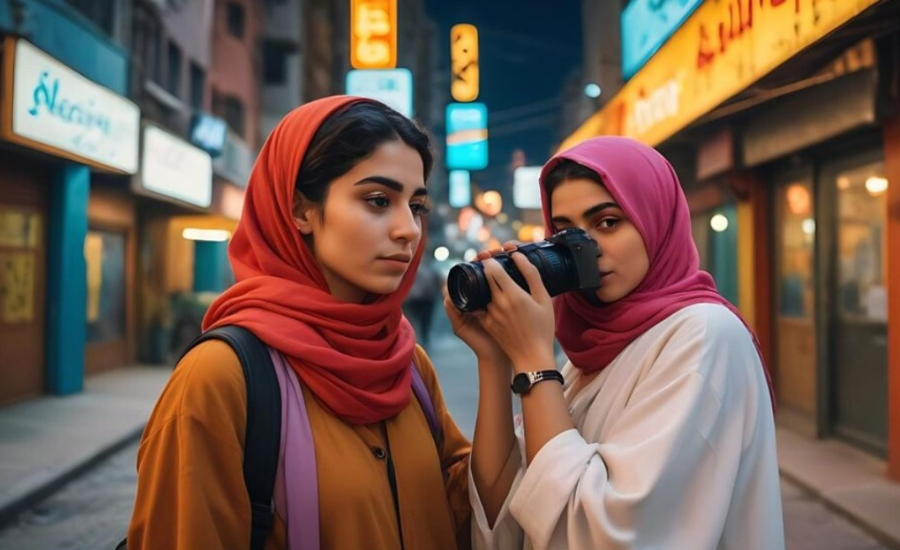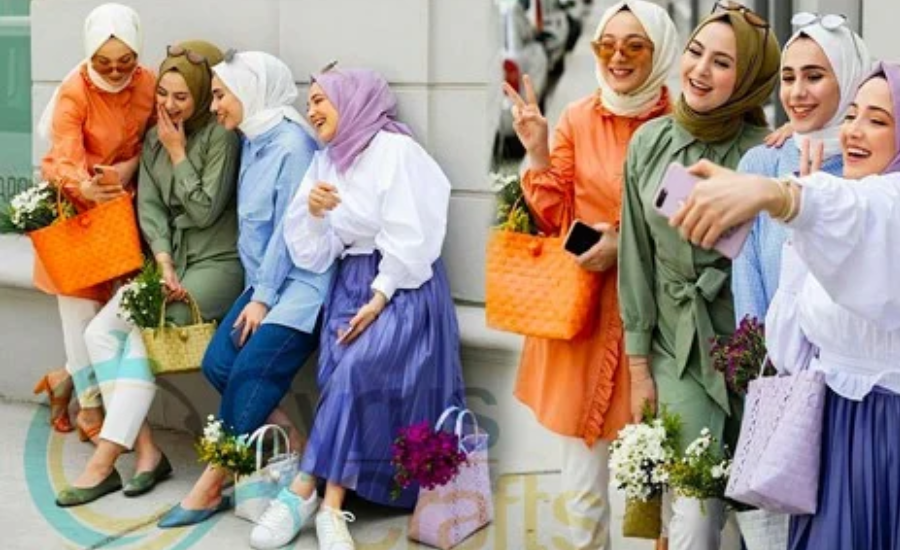The hijabhoojup is more than just a trendy headwrap; it’s a creative outlet for self-expression and a reflection of cultural identity. Whether you’re preparing for a casual outing, a formal event, or just looking to enhance your everyday wardrobe, mastering the art of hijabhoojup can transform your look. Let’s explore how to craft your own hijabhoojup from scratch, with comprehensive steps, styling tips, and maintenance advice to keep your designs flawless.
Why Choose DIY Hijabhoojup?

Creating a hijabhoojup yourself offers several benefits beyond aesthetics:
1. Personalization And Uniqueness
When you design your hijabhoojup, every element is a reflection of your taste. From fabric choice to embellishments, you control every detail, making each piece truly one of a kind.
2. Cost-Effective Fashion
Customizing your hijabhoojup at home allows you to achieve high-end looks without the hefty price tag. Save money by using affordable materials while maintaining quality.
3. Sustainable Style
DIY fashion promotes sustainability by reducing reliance on mass-produced items. By crafting your hijabhoojup, you contribute to minimizing textile waste.
4. Skill Development And Creativity
Engaging in this DIY project helps develop skills like sewing, cutting, and designing. It’s also an opportunity to explore your artistic side, turning simple fabric into wearable art.
Tools And Materials You’ll Need
Before diving into your project, gather these essential items:
- Fabric: Opt for comfortable and breathable materials such as cotton, chiffon, or jersey.
- Measuring Tape: Ensures accurate sizing for a perfect fit.
- Scissors: A sharp pair is crucial for clean cuts.
- Sewing Supplies: If sewing, have needles, thread, or a sewing machine ready.
- Fabric Glue or Tape: Ideal for quick no-sew options.
- Pins: Keep fabric layers in place as you work.
- Iron: Smooths out wrinkles and gives a polished finish.
- Optional Embellishments: Beads, sequins, lace, or embroidery materials for added flair.
Step-by-Step Guide To Crafting Your Hijabhoojup
Step 1: Selecting The Perfect Fabric
The fabric you choose sets the tone for your hijabhoojup. Prioritize comfort and practicality:
- Cotton and Chiffon: Ideal for breathable, lightweight coverage.
- Jersey and Silk Blends: Offer versatility for cooler weather or luxurious events.
- Patterns and Colors: Choose designs that match your wardrobe and occasion.
Step 2: Measuring And Cutting Your Fabric

Precision is key to creating a well-fitted hijabhoojup:
- Lay Out Your Fabric: Ensure it’s on a flat, clean surface.
- Measure Dimensions: Standard lengths are around 2 yards, but adjust to your preference.
- Mark and Cut: Use tailor’s chalk to mark cutting lines, then carefully cut with sharp scissors.
- Leave a Margin: Add an extra inch for hemming, ensuring durability and preventing fraying.
Step 3: Choosing Between Sewing And No-Sew Techniques
Sewing Method
- Use a straight stitch for basic edges or decorative stitches for a custom touch.
- Hem the edges to enhance durability.
No-Sew Alternatives
- Apply fabric glue or tape for quick edge finishing.
- Secure layers with pins or fabric clips for temporary styles.
Both methods are beginner-friendly, allowing you to choose based on your comfort and time.
Step 4: Embellishing For A Personal Touch
Adding embellishments turns a simple hijabhoojup into a statement piece:
- Beads and Sequins: Sew or glue along the edges for subtle sparkle.
- Embroidery: Craft unique patterns that showcase your creativity.
- Lace Trims and Brooches: Use these for an elegant, sophisticated finish.
Experiment with placements and combinations to find the perfect balance for your look.
Styling Tips For Every Occasion
A hijabhoojup can adapt to various events and moods:
Casual Day Out
Pair a pastel hijabhoojup with casual outfits like jeans and a loose top for a relaxed vibe.
Formal Events
Opt for rich colors and layered draping. Add subtle embellishments to complement your formal attire.
Professional Settings
Stick to neutral tones and sleek wrapping styles to maintain a polished appearance.
Festive Celebrations
Experiment with bold patterns, vibrant colors, and decorative trims to match the joyful atmosphere.
Maintenance And Care
To keep your hijabhoojup in top condition:
- Gentle Washing: Hand wash with mild detergent to preserve colors and textures.
- Air Drying: Lay flat or hang to dry naturally. Avoid direct sunlight to prevent fading.
- Ironing: Use a low heat setting or steam to smooth out wrinkles without damaging delicate fabrics.
- Storage: Store in a cool, dry place. Consider a breathable garment bag for added protection.
Conclusion

Crafting your own hijabhoojup is an enriching journey that blends style, creativity, and cultural appreciation. Whether you’re perfecting your everyday look or designing for a special event, this guide empowers you to create stunning headwraps tailored to your unique personality.
With practice and care, your hijabhoojup can become a signature piece, enhancing your wardrobe and showcasing your individuality. So gather your tools, unleash your creativity, and start your DIY hijabhoojup journey today!
FAQs On DIY Hijabhoojup
1. What is a hijabhoojup?
A hijabhoojup is a stylish and versatile headwrap that combines traditional hijab elements with modern design. It’s a creative accessory that allows for personal expression and cultural representation.
2. What fabrics are best for making a hijabhoojup?
Cotton and chiffon are excellent for breathable, lightweight options. Jersey provides stretch and comfort, while silk blends offer a luxurious feel for formal occasions.
3. Can I create a hijabhoojup without sewing?
Yes! No-sew methods include using fabric glue, fabric tape, or pins to secure edges and layers. These options are quick and beginner-friendly.
4. How long does it take to make a hijabhoojup?
The time varies based on your chosen method. A simple no-sew hijabhoojup can take as little as 30 minutes, while a more intricate sewn piece with embellishments may take a few hours.
5. How can I personalize my hijabhoojup?
Personalize your hijabhoojup by adding beads, sequins, embroidery, or lace trims. Choose colors and patterns that reflect your personality or match specific outfits.
Read Next : Adn-237.org
